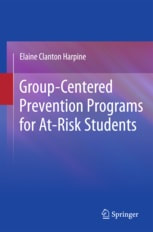What I find interesting is that the drug leaflet says not to use it for “severe anxiety, tension, or agitation (stimulant medicine can make these symptoms worse).” Most children diagnosed with ADHD are placed on Adderall because of anxiety, agitation, and not being able to focus.
The point that I’m trying to make is that there are many alternatives for ADHD other than drugs. I mentioned several in my 10-3-18 blog post. Before you decide to use Adderall or other ADHD medications, check the facts. Do not simply trust a doctor or the school when they say that Adderall is safe. Notice at best, Adderall prescribers say, “safe for short-term use.” Yet, many children are placed on Adderall for years
The abuse of Adderall is becoming a major nationwide concern. There is even a new documentary film available through Netflix talking about Adderall addiction. What happens when ADHD patients are taken off of ADHD meds? Remember, Adderall is an addictive drug and in some cases, it can lead to street drugs. The connection between ADHD meds and meth is truly frightening.
So, in answer to the parent’s question:
· No, Adderall is not safe, not even short-term, says Dr. Sanford C. Newmark, M. D.
· Yes, Adderall can be harmful and can have long-term life-long side effects. As Kelly Patricia O’Meara with the CCHR, a Mental Health Watchdog agency, states: “there is not now, nor has there ever been, any medical or scientific test to show that any child diagnosed “ADHD” is suffering from a medical condition requiring drugs to ‘treat’ it.”
· Yes, there are effective non-drug treatments for ADHD (see my 10-3-18 blog).
Why is ADHD a concern in reading failure? Because many children diagnosed with ADHD are also diagnosed with reading failure. Adderall and other ADHD meds are not the answer to reading failure. Children with reading failure will not automatically start reading if you place them on Adderall or other ADHD medications. The only way to correct reading failure is to “train the brain” by teaching children how to decode (break words down into letter sounds) and encode (put those sounds back together and pronounce and read the word).

 RSS Feed
RSS Feed
